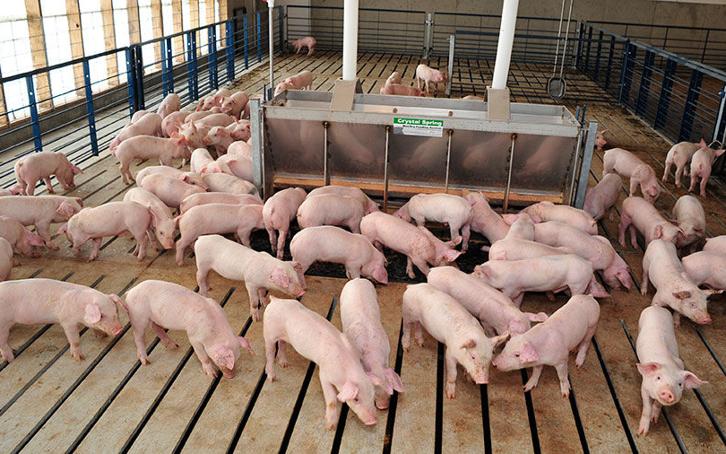It’s hard to believe that the cost of nitrogen fertilizer has tripled in the last year! Kyle...
Hogs and Pigs Report Offers Few Surprises

The U.S. breeding herd, at 6.01 million head, was down 3% from last year. It was also down slightly from the previous quarter.
June’s quarterly Hogs and Pigs Report offered few surprises, if any. As of June 1, there were 74.5 million hogs and pigs on U.S. farms. According to the USDA’s National Agricultural Statistics Service, that is up 1% from June 2023 and up slightly from March 1 of this year.
Of those 74.5 million hogs and pigs, 68.5 million were market hogs while 6.01 million were kept for breeding. U.S. hog producers intend to have 2.96 million sows farrow between June and August, and 2.94 million sows farrow between September and November.
The pigs per litter weaned in the March through May period came in at an average of 11.56. The number was up from the 11.53 reported in the first quarter released in March, but down from 11.66 in the 2023 fourth-quarter report.
That weaned-per-litter figure results in 34 million pigs weaned on U.S. farms between March and May, which is up 2% from the same time a year ago.
Iowa, Minnesota and North Carolina came in with the largest hog inventories: 24.6 million head, 9.20 million head and 7.60 million head, respectively.
While there wasn’t much in the way of surprises, this report didn’t offer much hope for hog price rallies in the near term, according to market analysts.
Steve Meyer, lead economist with ever.ag, sticks to his mantra of the past year that one of three things that need to happen for pork producers to reach profitability: costs must fall; demand, both or either of domestic consumer-level and exports, must increase; and pork supplies must be reduced.
Despite recent flooding in southern Minnesota and northern Iowa, there is hope for bigger crops which one would think should lead to lower feed costs.
Exports are King
Exports are a bright spot for U.S. pork demand, especially to Mexico, by far the biggest customer, followed by South Korea and the grouping of “others.”
According to a U.S. Meat Export Federation release about the recent U.S. Red Meat Symposium that was held in Mexico City, Randy Spronk says, “Mexico is a very important customer for us, especially with its potential for undervalued cuts.” Spronk is the USMEF chairman and a crop and hog farmer from Edgerton, Minnesota.
While Mexico has been a steady and growing market for U.S. pork, Jonn Slette, director of the USDA’s Agricultural Office in Mexico City, says in the USMEF release there may be even more growth coming. “I would say that Mexico is still a developing market. Over 60% of Mexicans are still at or below the poverty line and, as they move into the middle class, that’s where our growth is going to be.”
According to the USMEF, Mexican imports of U.S. pork reached 388,855 metric tons from January to April, with a value of $815.6 million. Those numbers represent an 11% increase in volume and 18% in values over record levels traded in 2023.
Mexican export value averaged $16.23 in 2023 for all market hogs slaughtered in the United States, according to the Pork Checkoff, while exports to other countries brought the total export value to $63.76 per hog.
Steady growth in exports is necessary, as the aftermath of California’s Prop 12 continues to unfold and impacts domestic demand. California historically consumes 13% of U.S. net pork supplies; some data suggest that amount is down 20% to 30% before the Prop 12 limitations were enforced.
EDITOR’S TAKE:
While I don’t follow hog markets on a daily basis, it appears that based on what the experts said needed to happen, hog producers could, in fact, have a better year ahead. Why do I say this? For one thing, the breeding stock declined which translates to fewer little porkers in the future (assuming weaning rates stay approximately the same). Second, exports are increasing, especially to a huge customer like Mexico. That has to be price positive at some point. Finally, despite a drop in demand from California, other areas are showing growth over time. All-in-all a little rosier picture for the pork industry in my opinion. That is precisely why I recommend keeping pork producers squarely in your customer prospect sights. So, be sure to list your inventory on AgTruckTrader.com – your direct link to all the farmers/ranchers in your area.








